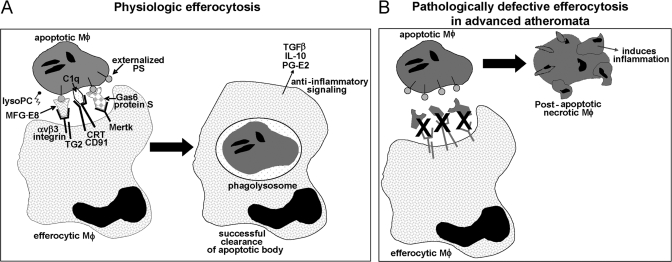Figure 2.
Efferocytosis of apoptotic macrophages and how it may go awry in advanced atheroma. (A) Physiologic efferocytosis can involve many molecules, including a diverse array of receptors, ligands, and bridging molecules. An increase in the ratio of so-called find-me:don’t-eat-me signals also enables efferocytosis. Depicted here are several molecules that have been shown to a play a role in murine models of atherosclerosis. Successful recognition and engulfment of apoptotic bodies lead to avoidance of cellular necrosis and anti-inflammatory signaling. CRT, Calreticulin. (B) In advanced atheromata, there is evidence that efferocytosis becomes less effective, leading to secondary macrophage necrosis and inflammation, two processes that likely promote plaque vulnerability. There are several hypotheses as to why efferocytosis loses efficiency in advanced plaques, including dysfunction of the molecules depicted in A as a result of cleavage, decreased expression, or competitive inhibition of binding by other plaque molecules. See text for details.

